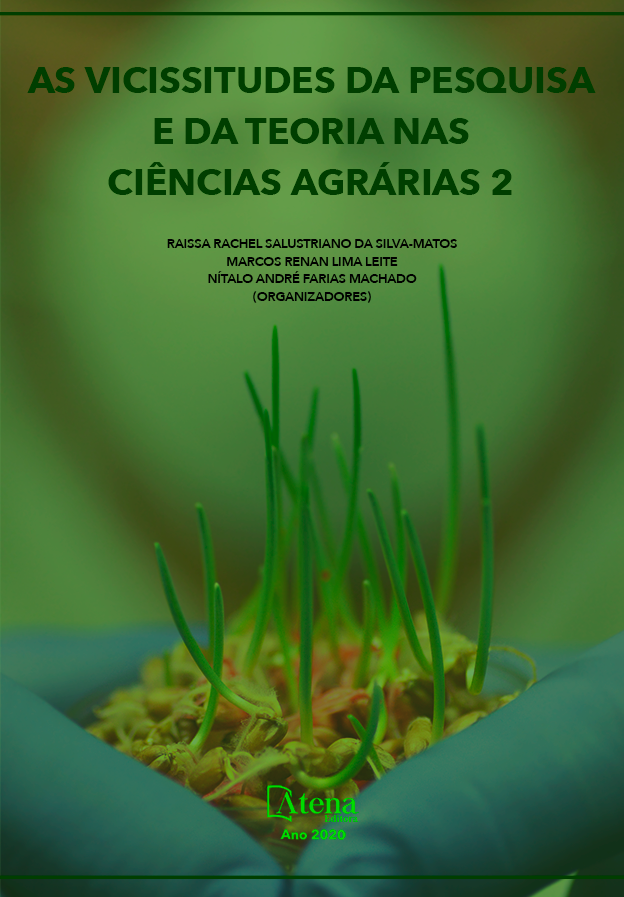
RENDIMENTO DE POLPA DE CUPUAÇU EM DIFERENTES DISPONIBILIDADES HÍDRICAS NAS CONDIÇÕES CLIMÁTICAS DE CASTANHAL-PA
O Theobroma grandiflorum é uma frutífera de elevada importância econômica e amplamente encontrada no Estado do Pará. O objetivo deste estudo foi avaliar o rendimento de polpa dos frutos do cupuaçuzeiro em diferentes lâminas de irrigação, no município de Castanhal-PA. O experimento foi realizado na Fazenda Experimental da Universidade Federal Rural da Amazônia. A cultivar estudada foi a BRS-Carimbó, em um plantio de sete anos de idade. O delineamento experimental foi inteiramente casualizado, com 4 tratamentos (TS e T50, T100, T150 da ET0) e 5 repetições. Para o cálculo do rendimento de polpa foram utilizados os frutos colhidos no mês de março de 2019. Os tratamentos TS, T50, T100 e T150 apresentaram rendimento de polpa de 32,39%, 33,33%, 34,20% e 38,70% respectivamente. A reposição de 150% da ET0 proporcionou maior rendimento de polpa. A demanda atmosférica atrelada as diferentes disponibilidades hídricas interferem no rendimento de polpa do cupuaçuzeiro.
RENDIMENTO DE POLPA DE CUPUAÇU EM DIFERENTES DISPONIBILIDADES HÍDRICAS NAS CONDIÇÕES CLIMÁTICAS DE CASTANHAL-PA
-
DOI: 10.22533/at.ed.4642003114
-
Palavras-chave: Theobroma grandiflorum; Irrigação; Déficit hídrico; Fruticultura; Microclima.
-
Keywords: Theobroma grandiflorum; Irrigation; Water deficit; Fruit growing; Microclimate.
-
Abstract:
Theobroma grandiflorum is a fruit of high economic importance and widely found in the State of Pará. The objective of this study was to evaluate the pulp yield of cupuaçuzeiro fruits in different irrigation depths, in the municipality of Castanhal-PA. The experiment was carried out at the Experimental Farm of the Federal Rural University of the Amazon. The cultivar studied was BRS-Carimbó, in a seven-year-old plantation. The experimental design was completely randomized, with 4 treatments (TS and T50, T100, T150 from ET0) and 5 repetitions. To calculate the pulp yield, fruits harvested in March 2019 were used. The treatments TS, T50, T100 and T150 showed pulp yield of 32.39%, 33.33%, 34.20% and 38, 70% respectively. The replacement of 150% of ET0 provided higher pulp yield. The atmospheric demand linked to the different water availability interferes with the cupuaçuzeiro's pulp yield.
-
Número de páginas: 12
- PAULO JORGE DE OLIVEIRA PONTE DE SOUZA
- DEBORAH LUCIANY PIRES COSTA
- CARMEN GRASIELA DIAS MARTINS
- JOÃO VITOR FERREIRA DA SILVA
- JOÃO VITOR DE NÓVOA PINTO
- JAIME BORGES DA CUNHA JUNIOR
- LUCAS BELÉM TAVARES
- BIANCA NUNES DOS SANTOS
- STEFANY PORCINA PENICHE LISBOA
- ADRIELLE CARVALHO MONTEIRO
- MARIA DE LOURDES ALCÂNTARA VELAME
- Erika de Oliveira Teixeira


